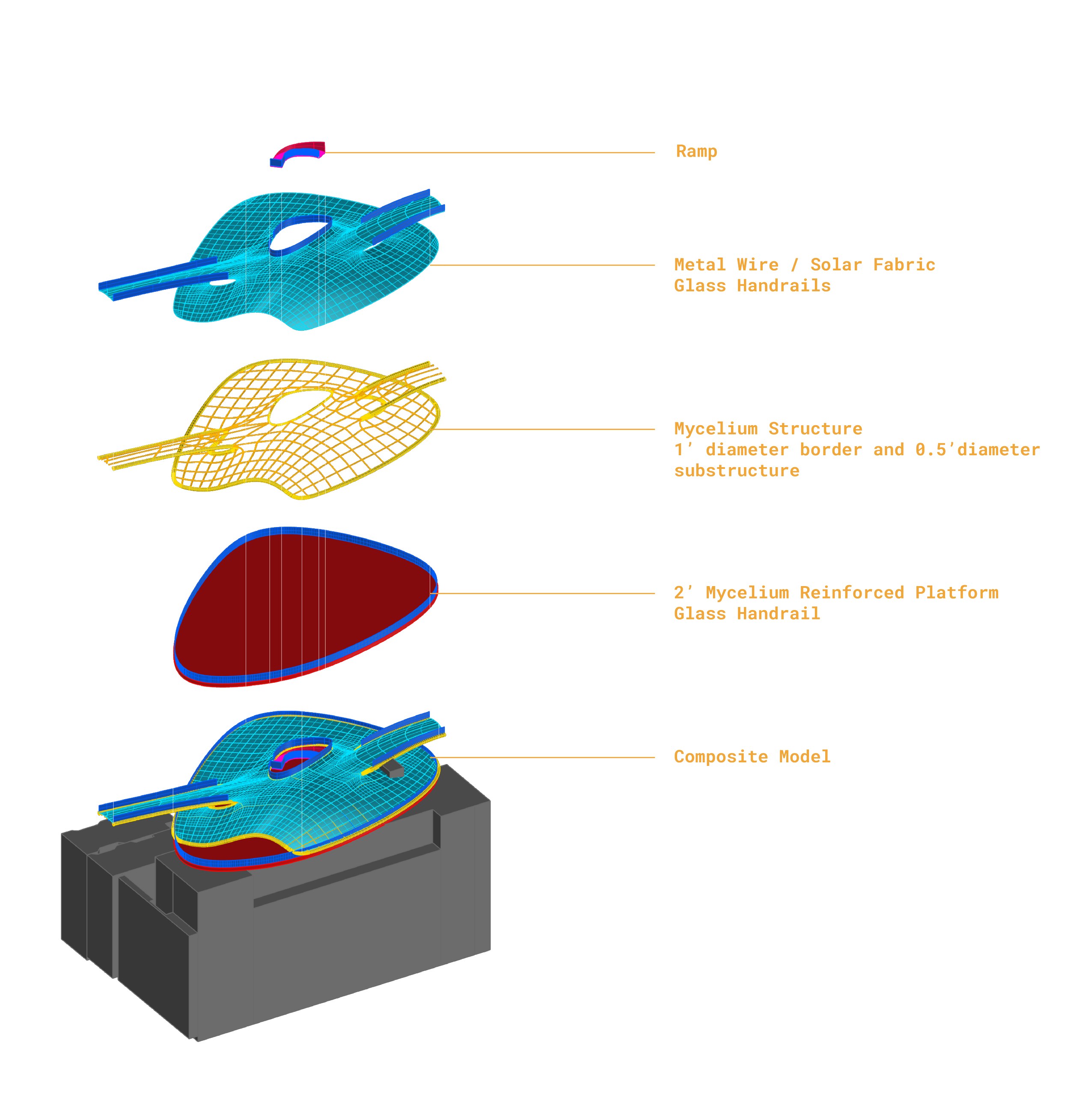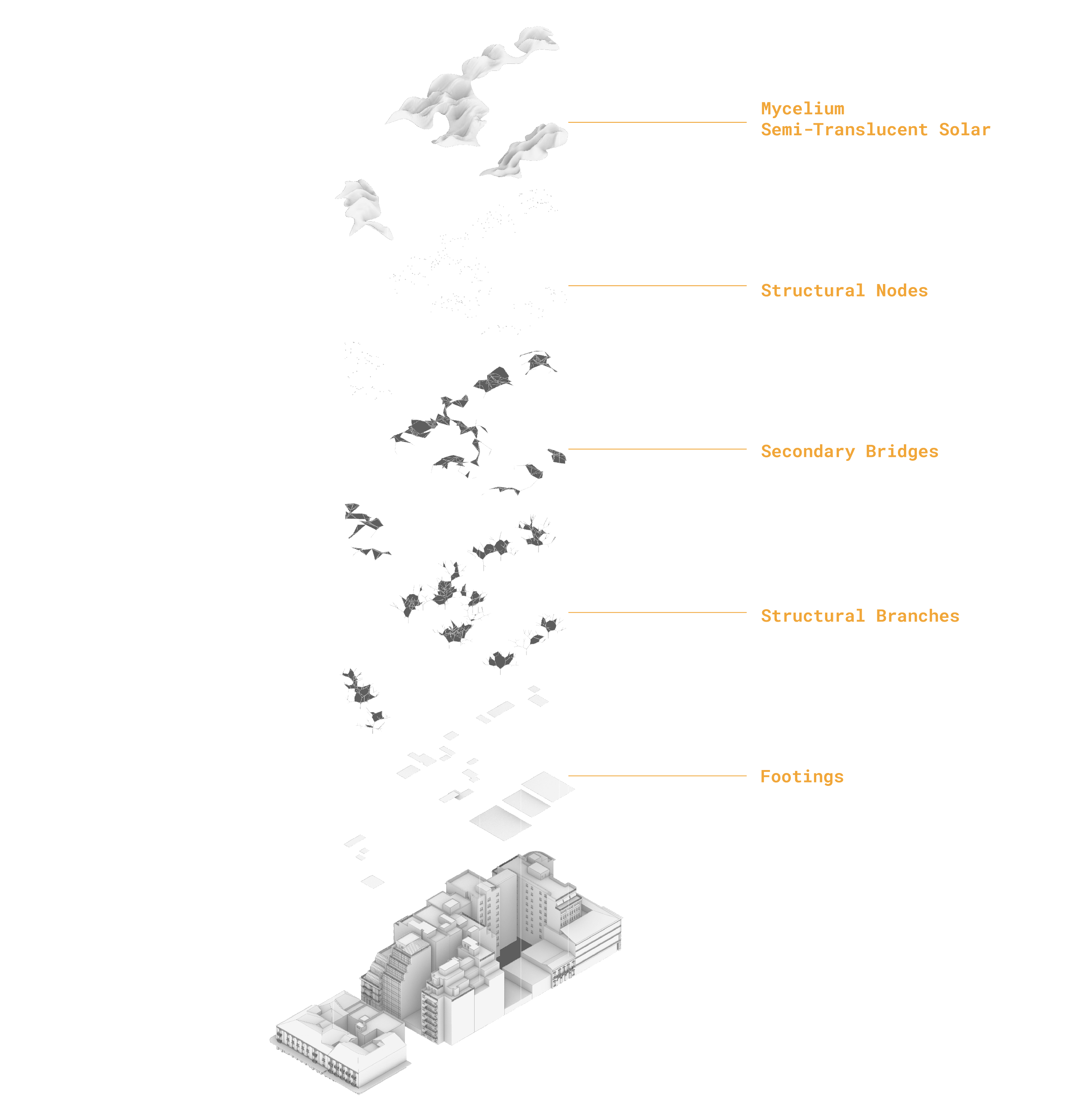
Archipelago
> Project Type: Academic
> Location: Harlem, New York City, NY
> Instructor: Shawn Rickenbacker, Marcus Wilford
> Year: 2022
> Role: Collaborative Project with Adam Wang, Brian You, Dina Lin
Archipelago is a project to transform and revitalize the rooftop space in Harlem, NYC. The project's tactic assembles those patches on the rooftop to prosper communal activities and cultures and return greenery space to the city. It is the modern version of Robert Moses' swimming pool and resistance to the environmental crisis - the urban heat island effect. Mycelium tunnels and arches form the main structure and connection system, which would experience growth, aging and death. The supportive nodes are calibrated parametrically, whereas the connection and ending of rooftop patches automatically generate by embedded code. In this way, the building's lifecycle would concur with Mycelium's growing and withering. The programmes are no longer preset by the architects but developed by human occupancy and situations: With more activities involved, opening spaces would be exploited, and with fewer human traces, bushes and natural creatures would come back as compensation for exploitation. The strong motive behind the act is to restrain the architects' power and urge them to step aside in humility after the accomplishment of building and let the user develop situations.
Archipelago represents the ensemble of small patches as a group effect. The analogy to human society, those fragmented, peripheral and negligible become the source of new territory and lifestyle. Geographically, NYC is an archipelago system consisting Manhattan Islands and Long Islands. As an enclave filled with work-class and coloured people, Harlem and Bronx are in a similar role in NYC in cultural identity. All of the alienation and metaphor direct us to come up with this name. The Archipelago effect is the dilemma faced by the neighbourhood, but it also is the solution.





